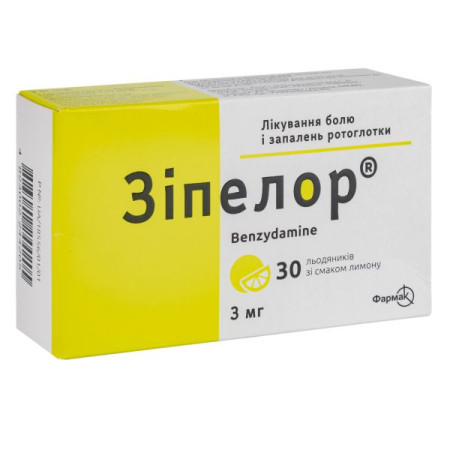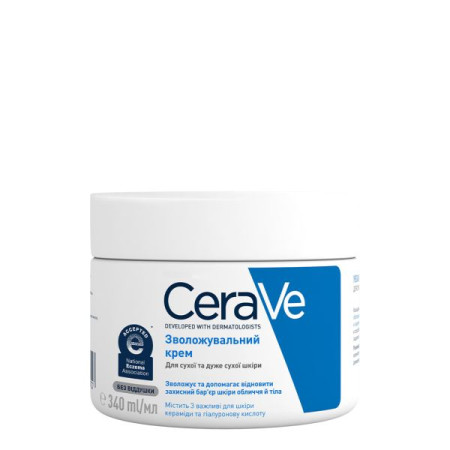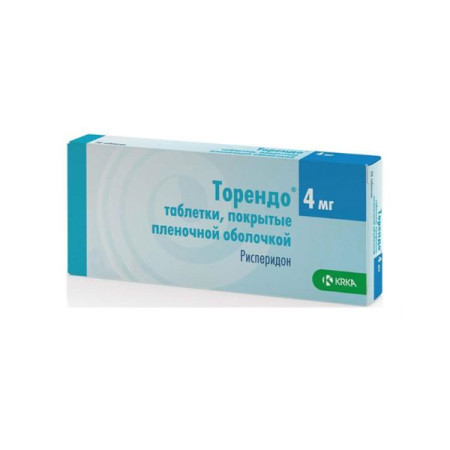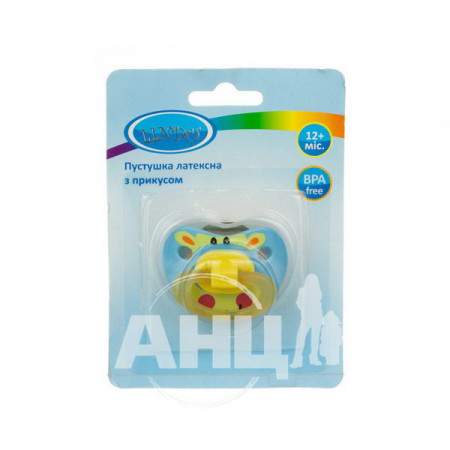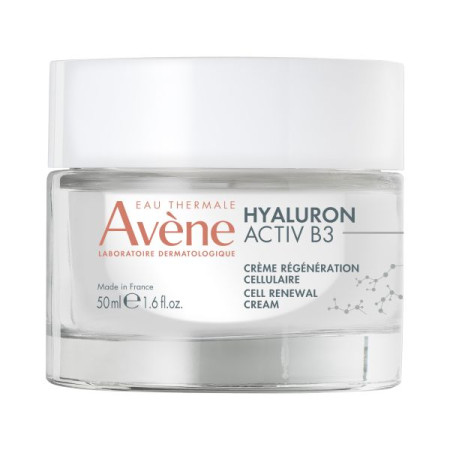Avanalav tablets 100 mg blister No. 4

Instructions for Avanalav tablets 100 mg blister No. 4
Composition
active ingredient: avanafil;
1 tablet contains 50 mg or 100 mg of avanafil;
excipients: mannitol (E 421), fumaric acid, hydroxypropyl cellulose, low-substituted hydroxypropyl cellulose, calcium carbonate, magnesium stearate, yellow iron oxide (E 172).
Dosage form
Pills.
Main physicochemical properties: round tablets, with a biconvex surface, light yellow in color. Almost white inclusions are allowed.
Pharmacotherapeutic group
Drugs for the treatment of erectile dysfunction.
ATX code G04B E10.
Pharmacological properties
Pharmacodynamics.
Mechanism of action
Avanafil is a highly selective and potent reversible inhibitor of phosphodiesterase type 5 (PDE5), specific for cyclic guanosine monophosphate (cGMP). When sexual stimulation causes local release of nitric oxide, inhibition of PDE5 by avanafil results in an increase in cGMP levels in the corpora cavernosa of the penis. This promotes relaxation of smooth muscle and blood flow to the penile tissue, which causes erection. Avanafil has no effect in the absence of sexual stimulation.
Pharmacodynamic effects
In vitro studies have shown that avanafil is highly selective for PDE5. Its effect on PDE5 is more potent than that on other known phosphodiesterases (>100-fold more potent than PDE6; >1000-fold more potent than PDE4, PDE8 and PDE10; >5000-fold more potent than PDE2 and PDE7; >10000-fold more potent than PDE1, PDE3, PDE9 and PDE11). Avanafil is >100-fold more potent for PDE5 than for PDE6, which is found in the retina and is responsible for photoconversion. The selectivity of the effect on PDE5, which is approximately 20,000-fold more potent than that on PDE3 (an enzyme found in the heart and blood vessels), is important given that PDE3 is involved in the control of myocardial contractile function.
Pharmacokinetics.
Avanafil is rapidly absorbed after oral administration, with a median Tmax of 30 to 45 minutes. Its pharmacokinetics are dose-proportional over the recommended dose range. It is eliminated primarily by hepatic metabolism (primarily via CYP3A4). Concomitant use of potent CYP3A4 inhibitors (e.g. ketoconazole and ritonavir) has been associated with an increase in the area under the plasma concentration-time curve (AUC) of avanafil (see section 4.5). The terminal half-life of avanafil is approximately 6 to 17 hours.
Absorption: Avanafil is rapidly absorbed. Peak plasma concentrations (Cmax) are achieved within 0.5 to 0.75 hours after oral administration in the fasted state. When avanafil is taken with a high-fat meal, the rate of absorption is reduced, with a mean delay in Tmax of 1.25 hours and a mean decrease in Cmax of 39% (at a dose of 200 mg). There was no effect on AUC. The small changes in Cmax of avanafil are considered to be of minimal clinical significance.
Distribution. Avanafil is approximately 99% bound to plasma proteins. Protein binding is independent of total drug concentration, age, renal function, and liver function. Avanafil did not accumulate in plasma when administered at a dose of 200 mg twice daily for 7 days. Based on the results of determination of avanafil in semen of healthy volunteers 45–90 minutes after administration, less than 0.0002% of the dose may be present in semen of patients.
Biotransformation. Avanafil is eliminated from the body primarily by the hepatic microsomal isoenzymes CYP3A4 (major pathway) and CYP2C9 (minor pathway). The plasma concentrations of the major circulating metabolites, M4 and M16, are approximately 23% and 29% of the parent compound, respectively. Metabolite M4 has a phosphodiesterase selectivity profile similar to that of avanafil, and its in vitro PDE5 inhibitory activity is 18% of that of avanafil. Thus, M4 contributes approximately 4% of the total pharmacological activity of the drug. Metabolite M16 was inactive against PDE5.
Elimination: Avanafil is extensively metabolized in humans. Following oral administration, avanafil is excreted as metabolites, primarily in the feces (approximately 63% of the oral dose) and to a lesser extent in the urine (approximately 21% of the oral dose).
Other specific patient categories
Elderly men: Elderly patients (aged 65 years and older) had exposures comparable to those seen in younger patients (18–45 years). However, data in subjects aged 70 years and older are limited.
Hepatic impairment: Following a single 200 mg dose, subjects with mild hepatic impairment (Child-Pugh Class A) had exposures comparable to those seen in subjects with normal hepatic function. Subjects with moderate hepatic impairment (Child-Pugh Class B) had exposures comparable to those seen in subjects with normal hepatic function 4 hours after a single 200 mg dose of avanafil. Peak concentrations and exposures were similar to those seen in subjects with normal hepatic function after the effective dose of 100 mg avanafil.
Indication
Treatment of erectile dysfunction in adult men.
Sexual stimulation is required for Avanafil to be effective.
Contraindication
Hypersensitivity to the active substance or to any of the excipients of the drug.
Concomitant use of any form of organic nitrates or nitric oxide donors (e.g. amyl nitrite) (see section "Interaction with other medicinal products and other types of interactions").
Concomitant use of PDE5 inhibitors, including avanafil, with guanylate cyclase stimulators such as riociguat is contraindicated as this could potentially lead to symptomatic hypotension (see section 4.5).
Physicians should weigh the potential risk of sexual activity on cardiac function in patients with cardiovascular disease before prescribing Avanafil.
The use of avanafil is contraindicated in the following categories of patients:
patients who have had a myocardial infarction, stroke, or life-threatening arrhythmia within the last 6 months;
patients with arterial hypotension (blood pressure <90/50 mm Hg) or with arterial hypertension (blood pressure >170/100 mm Hg) at rest;
patients with unstable angina, angina during sexual activity, or congestive heart failure of functional class 2 or higher (according to the New York Heart Association classification).
Severe hepatic impairment (Child-Pugh class C).
Severe renal impairment (creatinine clearance <30 ml/min).
Loss of vision in one eye due to non-arteritic anterior ischemic optic neuropathy (NAION), regardless of whether this event was related to previous use of PDE5 inhibitors (see section "Special warnings and precautions for use").
Hereditary degenerative retinal disease.
Concomitant use of potent CYP3A4 inhibitors such as ketoconazole, ritonavir, atazanavir, clarithromycin, indinavir, itraconazole, nefazodone, nelfinavir, saquinavir and telithromycin (see sections “Interaction with other medicinal products and other types of interactions”, “Special instructions” and “Method of administration and dosage”).
Interaction with other medicinal products and other types of interactions
Potential pharmacodynamic interactions with avanafil
Nitrates. Avanafil has been shown to potentiate the hypotensive effects of nitrates compared to placebo in healthy volunteers. This is thought to be due to the combined effects of nitrates and avanafil on the nitric oxide/cGMP mechanism. Therefore, avanafil is contraindicated in patients taking any form of organic nitrate or nitric oxide donors (e.g. amyl nitrite). In a patient who has taken avanafil within the last 12 hours, the risk of a significant and potentially life-threatening decrease in blood pressure is increased when nitrates are prescribed for a medically justified life-threatening condition. Even in such circumstances, nitrates should only be used under close medical supervision and with appropriate haemodynamic monitoring (see section 4.3).
Medicinal products that lower systemic blood pressure. As a vasodilator, avanafil may lower systemic blood pressure. When Avanafil is used in combination with another medicinal product that lowers systemic blood pressure, additive effects may result in symptomatic hypotension (e.g. dizziness, lightheadedness, syncope or near-syncope). There is information that no cases of hypotension were observed in clinical trials, but isolated episodes of dizziness were noted (see section 4.8). During these trials, one episode of syncope was reported in the placebo group and one episode of syncope in the avanafil 100 mg group.
Alpha-blockers. There is information that the hemodynamic interactions of the drug with doxazosin and tamsulosin were studied in healthy volunteers in one crossover study with two periods. In patients receiving stable therapy with doxazosin, the mean maximum reduction in standing and supine systolic blood pressure (placebo-corrected) after taking avanafil was 2.5 mm Hg and 6.0 mm Hg, respectively. In total, 7 of the 24 study participants after taking avanafil had such levels of reduction from baseline in this indicator that had potential clinical significance (see section "Special instructions").
It is known that in patients receiving stable therapy with tamsulosin, the mean maximum reduction in standing and supine systolic blood pressure (placebo-corrected) after taking avanafil was 3.6 mmHg and 3.1 mmHg, respectively, and 5 of 24 study participants had such reductions from baseline after taking avanafil that were of potential clinical significance (see section "Special warnings and precautions for use").
There were no reports of syncope or other serious adverse events related to decreased blood pressure in any group of study participants.
Other antihypertensive agents, except alpha-blockers. It is known that a clinical study was conducted to assess the effect of avanafil on the potentiation of the blood pressure-lowering effects of individual antihypertensive drugs (amlodipine and enalapril). The results of the study showed that with simultaneous use of avanafil, the mean maximum reduction in supine blood pressure was 2/3 mm Hg compared to placebo in the enalapril group and 1/-1 mm Hg in the amlodipine group.
A statistically significant difference in the maximum reduction in supine diastolic blood pressure compared to placebo was observed only in the enalapril/avanafil combination group, with the level of reduction returning to baseline values 4 hours after the avanafil dose. There was one patient in each group who experienced a decrease in blood pressure without symptoms of hypotension, which resolved within 1 hour of onset. Avanafil had no effect on the pharmacokinetics of amlodipine, but amlodipine increased the maximum and total exposure of avanafil by 28% and 60%, respectively.
Alcohol: The use of alcohol in combination with avanafil increases the risk of symptomatic hypotension. In one crossover study in healthy volunteers, the mean maximum decrease in diastolic blood pressure was statistically significantly greater after administration of avanafil with alcohol than after administration of avanafil alone (by 3.2 mmHg) or alcohol alone (by 5.0 mmHg) (see section 4.4).
Other treatments for erectile dysfunction: The safety and efficacy of avanafil in combination with other PDE5 inhibitors or other treatments for erectile dysfunction have not been studied (see section 4.4).
Effects of other substances on avanafil
Avanafil is a substrate of CYP3A4 and is primarily metabolized by this enzyme. Studies have shown that medicinal products that inhibit CYP3A4 may increase the AUC of avanafil.
CYP3A4 inhibitors. Ketoconazole (400 mg daily), a selective and highly potent CYP3A4 inhibitor, increased the Cmax and AUC of avanafil after a single 50 mg dose by 3-fold and 14-fold, respectively, and prolonged the half-life of avanafil to approximately 9 hours. Ritonavir (600 mg twice daily), a highly potent CYP3A4 inhibitor that also inhibits CYP2C9, increased the Cmax and AUC of avanafil after a single 50 mg dose by approximately 2-fold and 13-fold, respectively, and prolonged the half-life of avanafil to approximately 9 hours. Other potent CYP3A4 inhibitors (e.g., itraconazole, voriconazole, clarithromycin, nefazodone, saquinavir, nelfinavir, indinavir, atazanavir, and telithromycin) are expected to have similar effects. Therefore, concomitant use of avanafil with potent CYP3A4 inhibitors is contraindicated (see sections 4.3, 4.4 and 4.8).
Erythromycin (500 mg twice daily), a moderate CYP3A4 inhibitor, increased the Cmax and AUC of avanafil after a single 200 mg dose by approximately 2-fold and 3-fold, respectively, and prolonged the half-life of avanafil to approximately 8 hours. Other moderate CYP3A4 inhibitors (e.g., amprenavir, aprepitant, diltiazem, fluconazole, fosamprenavir, and verapamil) are expected to have similar effects. Therefore, the maximum recommended dose of avanafil for patients taking concomitant moderate CYP3A4 inhibitors is 100 mg every 48 hours (see Dosage and Administration).
CYP3A4 substrate. Amlodipine (5 mg daily) increased the Cmax and AUC of avanafil after a single 200 mg dose by approximately 28% and 60%, respectively. These changes in AUC are not considered clinically significant. A single dose of avanafil had no effect on amlodipine plasma levels.
Although the interactions of avanafil with rivaroxaban and apixaban (both CYP3A4 substrates) have not been specifically studied, such interactions are not expected.
Cytochrome P450 enzyme inducers. The potential effect of CYP enzyme inducers, particularly CYP3A4 inducers (e.g., bosentan, carbamazepine, efavirenz, phenobarbital, and rifampin), on the pharmacokinetics and efficacy of avanafil has not been studied. Concomitant use of avanafil and CYP enzyme inducers is not recommended as it may reduce the efficacy of avanafil.
Effects of avanafil on other medicinal products
Inhibition of cytochrome P450 enzymes. In vitro studies have shown that avanafil (in human liver microsomes) has little potential for drug interactions mediated by CYP1A1/2, 2A6, 2B6, and 2E1. In addition, the metabolites of avanafil (M4, M16, and M27) have also shown minimal inhibition of CYP 1A1/2, 2A6, 2B6, 2C8, 2C9, 2C19, 2D6, 2E1, and 3A4. Based on these data, avanafil is not expected to have a significant effect on other drugs metabolized by these enzymes.
Although in vitro data have identified potential interactions of avanafil mediated by CYP 2C19, 2C8/9, 2D6 and 3A4, further studies with omeprazole, rosiglitazone and desipramine have not identified clinically significant interactions mediated by CYP 2C19, 2C8/9 and 2D6.
Induction of cytochrome P450 enzymes: Evaluation of the potential for induction of CYP1A2, CYP2B6 and CYP3A4 enzymes by avanafil, performed in primary human hepatocytes in in vitro studies, revealed no potential to induce these enzymes at clinically relevant concentrations.
Transporters. In vitro studies have demonstrated a modest potential for avanafil to act as a P-glycoprotein (P-gp) substrate and a P-gp inhibitor with digoxin as a substrate at concentrations below those estimated for the intestine. The potential for avanafil to affect P-gp-mediated transport of other drugs is unknown. In vitro studies have shown that avanafil may be an inhibitor of BCRP (breast cancer resistance protein) at clinically relevant concentrations. At clinically relevant concentrations, avanafil is not an inhibitor of the transport proteins OATP1B1, OATP1B3, OCT1, OCT2, OAT1, OAT3, and BSEP.
The effect of avanafil on other transporters is still unknown.
Riociguat. There is information that preclinical studies have demonstrated an additive effect on systemic blood pressure reduction when PDE5 inhibitors are used in combination with riociguat. In clinical studies, riociguat has been shown to enhance the hypotensive effects of PDE5 inhibitors. There was no evidence of a beneficial clinical effect of the use of such a combination in the studied populations. The concomitant use of riociguat and PDE5 inhibitors, including avanafil, is contraindicated (see section "Contraindications").
Application features
Before prescribing medication, it is necessary to collect a medical history and conduct a general medical examination to diagnose erectile dysfunction and determine its possible underlying causes.
Cardiovascular function. Before initiating any therapy for erectile dysfunction, the physician should assess the cardiovascular status of his patients, as sexual activity carries a certain risk for cardiac function (see section 4.3). Avanafil has vasodilator properties, resulting in a slight transient decrease in blood pressure (see section 4.5) and potentiates the hypotensive effect of nitrates (see section 4.5). Patients with left ventricular outflow tract obstruction, such as aortic valve stenosis or idiopathic hypertrophic subaortic stenosis, may be sensitive to the effects of vasodilators, including PDE5 inhibitors.
Priapism: Patients should be instructed to seek immediate medical attention if an erection lasts 4 hours or more (priapism). If priapism is not treated promptly, penile tissue damage and irreversible loss of potency may occur. Avanafil should be used with caution in patients with anatomical deformity of the penis (such as angulation, cavernosal fibrosis, or Peyronie's disease) and in patients with conditions that may predispose to priapism (such as sickle cell anemia, multiple myeloma, or leukemia).
Effects on blood clotting. In vitro studies on human platelets indicate that PDE5 inhibitors do not affect platelet aggregation by themselves, but at supratherapeutic doses they potentiate the antiplatelet effect of the nitric oxide donor sodium nitroprusside. In humans, PDE5 inhibitors do not affect blood clotting time either as monotherapy or when used in combination with acetylsalicylic acid.
There is no information on the safety of avanafil in patients with coagulation disorders or active peptic ulcer disease. Therefore, avanafil should be prescribed to such patients only after careful benefit/risk assessment.
Hearing loss or sudden hearing loss. Patients should be advised to discontinue PDE5 inhibitors, including avanafil, and seek medical advice immediately if they experience sudden hearing loss or deterioration. These events, which may be accompanied by tinnitus/ringing in the ears and dizziness, have been reported to be temporally associated with the use of PDE5 inhibitors. It is not possible to determine whether these events are directly related to the use of PDE5 inhibitors or to other factors.
Concomitant use of alpha-blockers: Concomitant use of alpha-blockers and avanafil may lead to symptomatic hypotension in some patients due to additive vasodilatory effects (see section 4.5). The following should be considered:
Patients receiving alpha-blocker therapy should be stabilized before initiating treatment with Avanafil. Patients who are hemodynamically unstable on alpha-blocker monotherapy are at increased risk of symptomatic hypotension when co-administered with avanafil.
For those patients who are stable on alpha-blocker therapy, avanafil therapy should be initiated at the lowest dose, 50 mg.
For patients already receiving an optimized dose of Avanafil, alpha-blocker therapy should be initiated at the lowest dose. Gradual increases in alpha-blocker dose while receiving avanafil may be accompanied by additional reductions in blood pressure.
The safety of the combined use of avanafil and alpha-blockers may be affected by other factors, including volume depletion and the use of other antihypertensive drugs.
Concomitant use of CYP3A4 inhibitors: Concomitant use of avanafil with potent CYP3A4 inhibitors, such as ketoconazole or ritonavir, is contraindicated (see sections 4.3, 4.5 and 4.8).
Concomitant use of other medicinal products for the treatment of erectile dysfunction. The safety and efficacy of Avanafil in combination with other PDE5 inhibitors or other medicinal products for the treatment of erectile dysfunction have not been studied. Patients should be cautioned against using Avanafil in combination with such medicinal products.
Concomitant use of alcohol. The use of alcohol in combination with avanafil increases the risk of symptomatic hypotension (see section 4.5). Patients should be advised that concomitant use of avanafil and alcohol increases the risk of hypotension, dizziness, or syncope. Physicians should also instruct patients on what to do if they experience symptoms of postural hypotension.
Populations in which the drug has not been studied: Avanafil has not been studied in patients with erectile dysfunction due to spinal cord injury or other neurological disorders, or in patients with severe renal or hepatic impairment.
Use during pregnancy or breastfeeding
Pregnancy: Avalanchez is not intended for use in women.
There are no data on the use of avanafil in pregnant women. Animal studies do not indicate direct or indirect harmful effects with respect to pregnancy, embryonal/fetal development, parturition or postnatal development of the offspring.
Breastfeeding: There are no data on the use of avanafil during breastfeeding.
Fertility: A single oral dose of 200 mg avanafil in healthy volunteers had no effect on sperm motility or morphology. There are no data on spermatogenesis in healthy adult men or in adult men with mild erectile dysfunction.
Ability to influence reaction speed when driving vehicles or other mechanisms
Avanafil has minor influence on the ability to drive and use machines. There is information that dizziness and visual disturbances have been reported during clinical trials with avanafil, so patients should be aware of how they react to Avanafil before driving or operating machinery.
Method of administration and doses
The recommended dose is 100 mg, taken as needed approximately 15–30 minutes before sexual activity. Based on individual efficacy and tolerability, the dose may be increased to a maximum of 200 mg or decreased to 50 mg. The maximum recommended frequency of administration is once daily. Sexual stimulation is required for a response to treatment.
Special categories of patients
Elderly men (≥65 years): No dose adjustment is necessary for elderly patients. Limited data are currently available for use in patients over 70 years of age.
Renal impairment. No dose adjustment is required for patients with mild to moderate renal dysfunction (creatinine clearance ≥30 mL/min). Avalanchez is contraindicated in patients with severe renal dysfunction (creatinine clearance <30 mL/min) (see sections 5.1 and 5.2). Patients with mild to moderate renal dysfunction (creatinine clearance ≥30 mL/min but <80 mL/min) had reduced efficacy compared to patients with normal renal function.
Hepatic impairment. Avanalav is contraindicated in patients with severe hepatic dysfunction (Child-Pugh class C) (see sections 5.1 and 5.2). In patients with mild or moderate hepatic dysfunction (Child-Pugh class A or B), treatment with the drug should be initiated at the lowest effective dose with subsequent titration based on tolerability.
Use in men with diabetes: No dosage adjustment is necessary for patients with diabetes.
Use in patients taking other medications
Concomitant use of CYP3A4 inhibitors: Concomitant use of avanafil with potent CYP3A4 inhibitors (such as ketoconazole, ritonavir, atazanavir, clarithromycin, indinavir, itraconazole, nefazodone, nelfinavir, saquinavir and telithromycin) is contraindicated (see sections 4.3, 4.5 and 4.4).
For patients receiving concomitant treatment with moderate CYP3A4 inhibitors (such as erythromycin, amprenavir, aprepitant, diltiazem, fluconazole, fosamprenavir and verapamil), the maximum recommended dose of avanafil is 100 mg, and a dose interval of at least 48 hours should be observed (see section 4.5).
Method of application
For oral use. When Avanalav is taken with food, the onset of action may be delayed compared to when taken on an empty stomach (see section “Pharmacological properties. Pharmacokinetics”).
Children.
Do not use in children (under 18 years of age).
Overdose
In cases of overdose, standard supportive measures should be administered as necessary. Hemodialysis is not expected to accelerate the clearance of avanafil, as avanafil is extensively bound to plasma proteins and is not excreted in the urine.
Avanafil has been administered in single doses of up to 800 mg to healthy volunteers and in multiple doses of up to 300 mg per day to patients. Adverse reactions were similar to those seen at lower doses, but their frequency and severity increased.
Adverse reactions
The adverse reactions listed below are classified by system organ class (according to MedDRA) and by frequency of occurrence: very common (≥1/10); common (≥1/100–<1/10); uncommon (≥1/1000–<1/100); rare (≥1/10000–<1/1000); very rare (<1/10000); frequency unknown (cannot be estimated from the available data).
On the part of the immune system: rarely - seasonal allergies.
On the part of the psyche: rarely - insomnia, premature ejaculation, inadequate affect.
From the nervous system: often - headache; infrequently - dizziness, drowsiness, sinus headache; rarely - psychomotor hyperactivity.
On the part of the organs of vision: infrequently - blurred vision.
Cardiac disorders: infrequently – palpitations; rarely – angina pectoris, tachycardia.
Vascular disorders: often - hyperemia; infrequently - hot flashes, arterial hypertension.
From the respiratory system, thoracic and mediastinal organs: often - nasal congestion; infrequently - sinus congestion, shortness of breath during physical exertion; rarely - rhinorrhea, upper respiratory tract congestion, epistaxis (nosebleeds).
From the gastrointestinal tract: infrequently - dyspepsia, nausea, vomiting, stomach discomfort; rarely - dry mouth, gastritis, pain in the lower abdomen, diarrhea.
Skin and subcutaneous tissue disorders: rarely - rash.
Musculoskeletal and connective tissue disorders: infrequently - back pain, muscle tension; rarely - flank pain, myalgia, muscle spasms.
From the kidneys and urinary tract: rarely - pollakiuria.
Reproductive system and breast disorders: rarely - penile disorders, spontaneous penile erection, genital itching.
Infectious and parasitic diseases: rarely - influenza, nasopharyngitis.
Metabolic and nutritional disorders: rarely - gout.
Laboratory indicators: infrequently - increased liver enzymes, electrocardiogram abnormalities, increased heart rate; rarely - increased blood pressure, blood in the urine, heart murmur, increased prostate-specific antigen, weight gain, increased bilirubin in the blood, increased creatinine in the blood, increased body temperature.
Reporting of suspected adverse reactions
This medicine is subject to additional monitoring. This will allow new safety information to be identified quickly. Reporting of suspected adverse reactions after the approval of a medicine by the regulatory authorities is an important procedure. This allows for continuous monitoring of the benefit/risk balance of this medicine. Healthcare professionals are asked to report all suspected adverse reactions via the national reporting system.
Expiration date
2 years.
Storage conditions
Store in the original packaging at a temperature not exceeding 25 °C.
Keep out of reach of children.
Packaging
1 tablet in a blister; 1 blister in a pack.
4 tablets in a blister; 1 blister in a pack.
Vacation category
According to the recipe.
Producer
JSC "KYIV VITAMIN FACTORY".
Location of the manufacturer and address of its place of business.
04073, Ukraine, Kyiv, Kopylivska St., 38.
There are no reviews for this product.
There are no reviews for this product, be the first to leave your review.
No questions about this product, be the first and ask your question.




